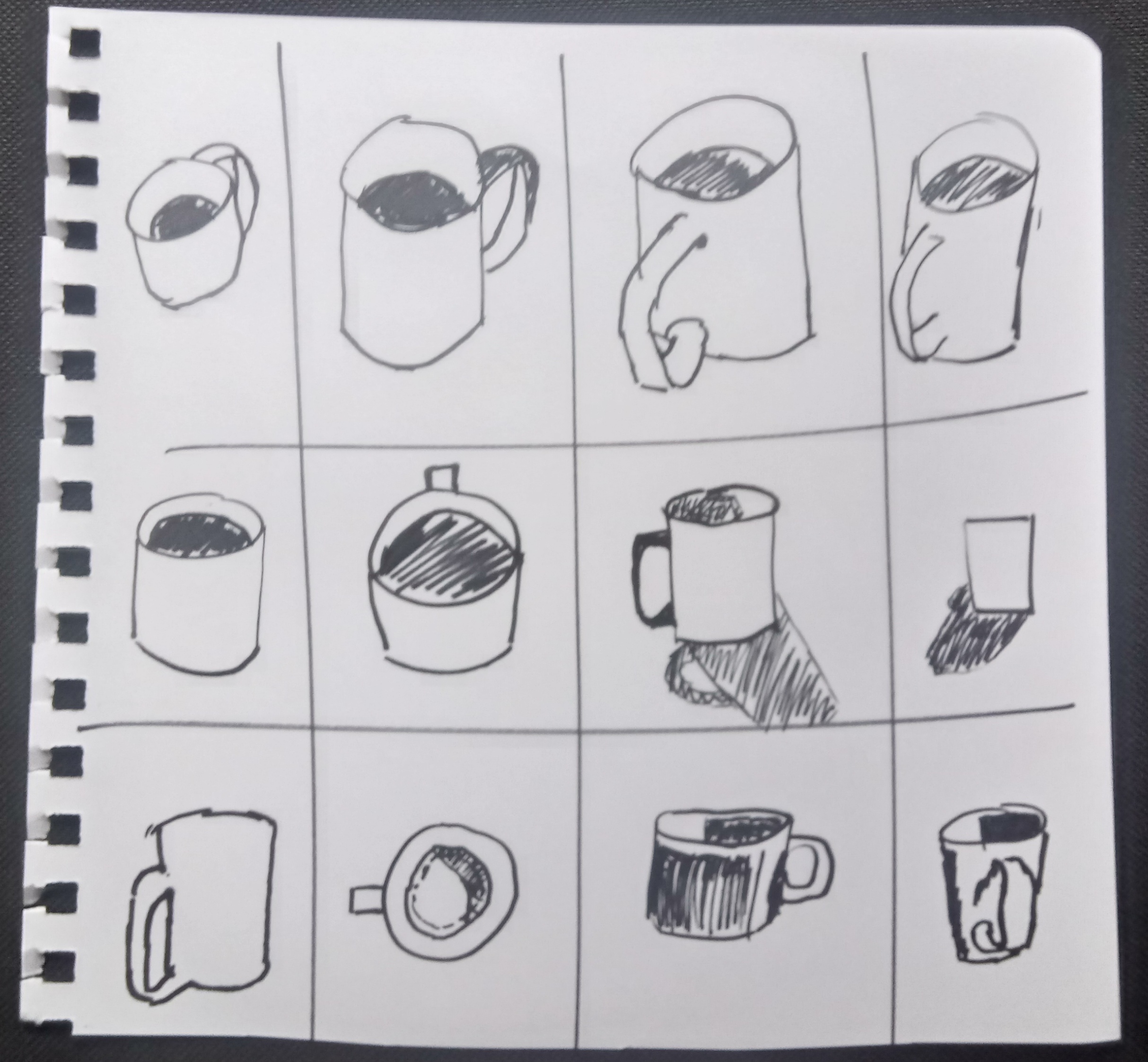case study: iterative drawing
post by brown (niclas) · 2018-10-17T04:35:12.459Z · LW · GW · 3 commentsContents
Notes None 3 comments
This exercise brings together a few principles from my previous posts. If you're in the mood to to a little drawing (15mins).
experiment: pick an object (eg a cup) to draw. Divide your page into 20 rectangles. Do a brief sketch in one of the rectangles. For a few moments, thoughtfully and non-judgmentally reflect on it. What interests you, what kind of shapes are there? Draw another cup variant, noticing as you go.
This exercise is taken from the youtube video: Iterative Drawing, the fastest way to improve. 40min video. The tl;dr is the exercise above. You do a tiny drawing experiment, and non-judgementally pay attention to what happened.
Iterative drawing is an example in fast feedback loops. You try out lots of different hypothesis and explore the space of all possible cups much faster. Of all possible marks on paper you will find the once you like if you explore more. If you're to spend 15 minutes drawing cups, I think I'd rather be the person who has drawn twenty over the person who has drawn one. [1]
You are generating a lot of interesting data. And you’ve paying attention to it. Quality and quantity. Anything you notice can then feedback into the generation process. The changes are cumulative. The results of each experiment inform the next batch of theories. Maybe the handles too large, perhaps a different angle. You’re also focusing on the fundamentals, shape and proportion. Not focusing on the details.
A few doodles & interesting things I discovered:

Notes
[1] I'm reminded of that anecdote about grading pottery students by quantity. You will be marked by sheer number of pots produced. This strange metric let to much better pottery. story and discussion here [LW · GW].
See also: Scott Young's Portrait Challenge
Nonjudgementally [LW · GW] looking at the world, then making an attempt to draw what's there, then observing the results is also in part inspired from Drawing on the Right Side of the Brain by Betty Edwards
More Brienne: an "original seeing"-esq post.
3 comments
Comments sorted by top scores.
comment by philh · 2018-10-21T19:12:04.769Z · LW(p) · GW(p)
It looks like a large chunk of this post is missing? I see four footnotes but only a reference to one of them.
Replies from: niclas↑ comment by brown (niclas) · 2018-10-22T00:56:48.596Z · LW(p) · GW(p)
This post is all there is. :) I was abusing the footnote notation to smuggle in links to other cool things. updated.
comment by Elo · 2018-10-17T20:49:52.665Z · LW(p) · GW(p)
What sort of comment does this post call for?
There is a trade off between sharpening the saw and cutting down the tree. Where short iterations can be seen as sharpening and longer iterations can be seen as actually doing the thing.
Does there need to be a separation of the two? What if this exercise was done on computer? Successive drafts.